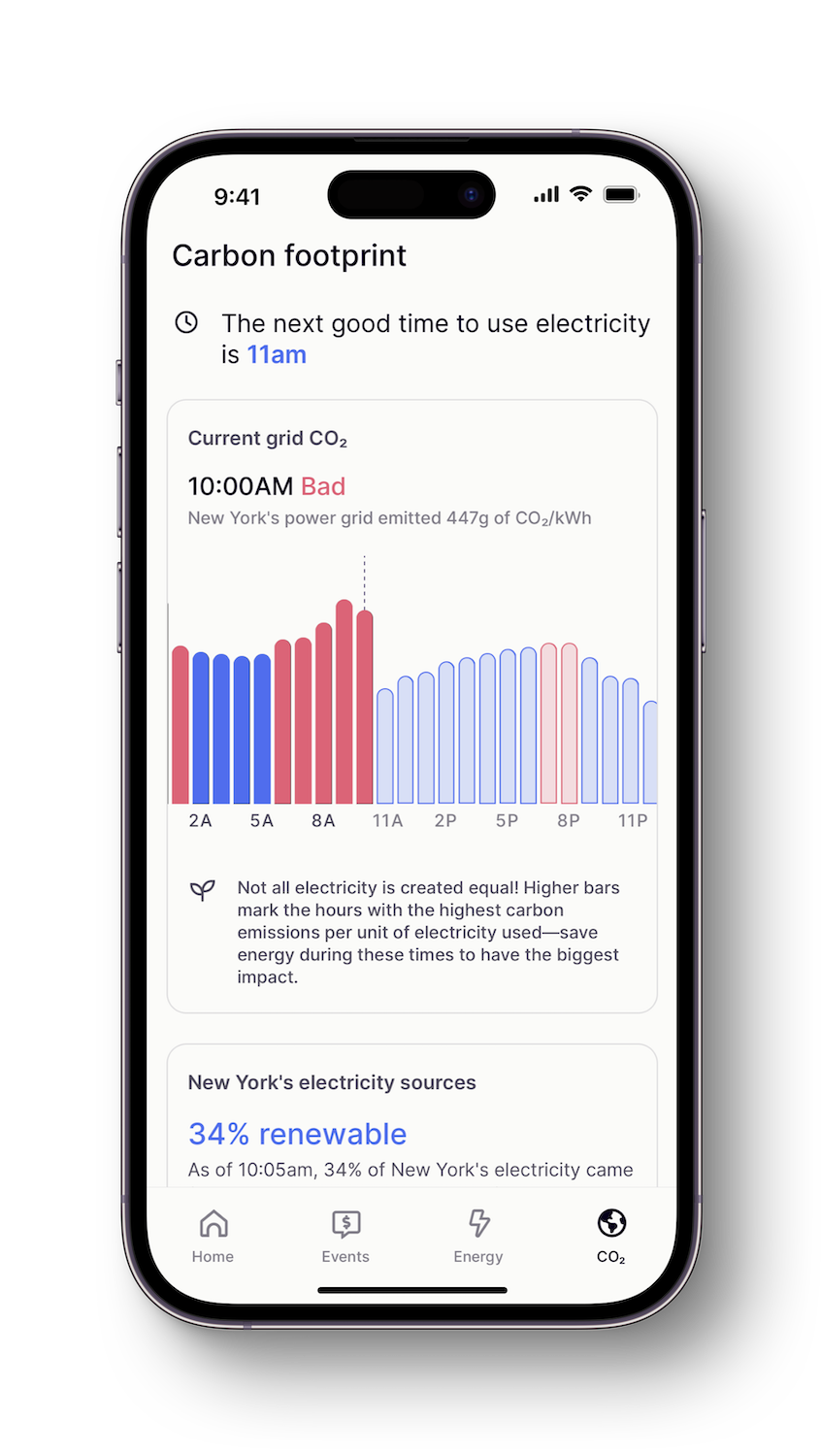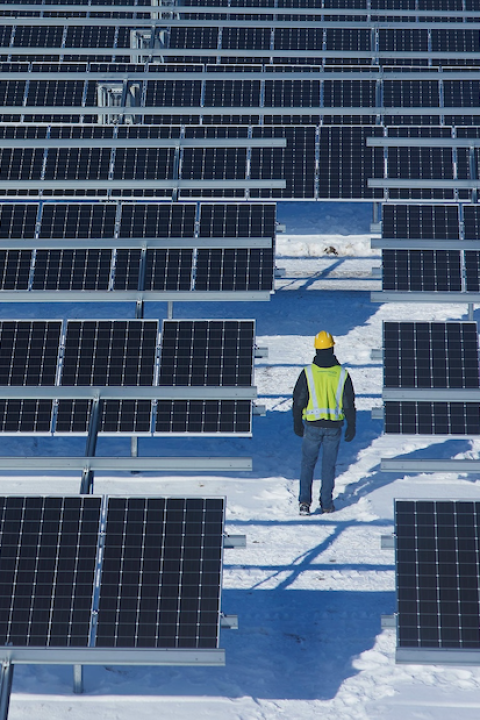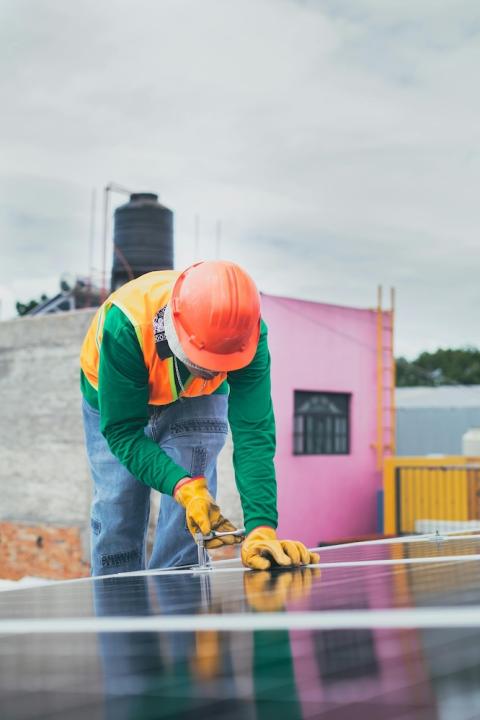
The carbon footprint of a home or office is based on a lot more than how much electricity it uses. When a building uses electricity can have a significant impact as well. That goes for electric vehicle (EV) charging, too. To make the most out of this dynamic, a climate technology company out of New York developed a set of tools for building managers and occupants alike.
Logical Buildings is behind the GridRewards app, which helps residents shrink their footprints while putting cash in their pockets, and the SmartKit AI software that helps commercial building managers increase energy savings by improving efficiency and sustainability.
Information is power
“Our goals are decarbonization and empowering people,” Jeff Hendler, CEO of Logical Buildings, told TriplePundit. "One of our monikers is 'shift the power.'"
As grids continue to decentralize, new opportunities emerge for individuals to track and take control of their own energy usage. Part of that trend centers on the installation of advanced metering infrastructure (AMI), which provides frequent, time-of-use, energy consumption data.
“That's really one of the key prerequisites to empower people to combat climate change — to know what to do and when,” Hendler said. “Certain times of day, there's more carbon being generated by the grid. And if you were to know that, you had that visibility, that access to information as an end user, that will change your decisions and how you behave.”
The reason carbon output is higher during some periods boils down to the need to bring peaker power plants online to meet increased demand during peak hours. These plants are notoriously dirtier and emit substantially more carbon than base load plants. That's because peaker plants are fossil fuel intensive, whereas many regions may rely heavily on nuclear energy or hydroelectric dams during non-peak times. That means the same amount of energy used during non-peak times creates substantially fewer carbon emissions than during the peak.
By providing consumers with this data, the GridRewards app empowers them to make informed decisions about when it’s best to do things like run appliances, charge EVs, and pre-cool their apartments or homes, Hendler said. The app can also be integrated with smart devices — such as smart thermostats and appliances — to further reduce carbon output.

Energy data availability is still limited
Unfortunately, the GridRewards app isn’t available everywhere, as the necessary AMI meters have not been universally installed, Hendler said. The app was first available in New York City, and its range has since expanded to California and Texas. The company is working to get registered in Ontario, Canada, as well.
“There are many states that have an AMI meter, but they're still going through the process of implementing the mobile protocol to enable the data,” Hendler said. On the other hand, “SmartKit is the type of product that is applicable anywhere on planet Earth. It's helping large building spaces use less."
SmartKit is more broadly applicable because most commercial meters have the sort of data needed to run the software, even if AMI is not installed locally yet, Hendler said.
Information and compliance for larger buildings
SmartKit AI works by learning a building’s profile and energy use habits. It combines that with the weather and other data, such as renovations and activities within the building, to try and eliminate peak energy usage. As a result, the software offers building operators guidance on staggering activities, pre-heating or pre-cooling to keep energy usage even. Scheduling move-outs and move-ins from residential buildings using elevators is one example of staggering activities, Hendler said.
SmartKit AI can be used to lower costs and carbon output for large spaces such as multifamily buildings, office buildings and industrial sites, he said. But the biggest challenge is getting people to realize these tools are out there.
“Five years ago, speaking to building operators was more of a challenge in terms of that inertia,” he said. “The culture has definitely changed. People are really seeing the effects of climate change. Carbon compliance has become a cultural choice. People are like, ‘Hey, I need to do something about this.’ Whether it's ESG — environmental, social [and] governance. Whether you have certain cities that have carbon compliance laws like New York City Local Law 97, which is actually starting in 2024.”
Local Law 97 aims to tackle the two-thirds of greenhouse gases in New York City that come from buildings. The law will apply to buildings over 25,000 square feet, lots where two or more buildings are over 50,000 square feet, and condo associations with more than 50,000 square feet. While initial regulations will go into effect next year, they will be further tightened in 2030. The city hopes to reduce greenhouse gases from its largest buildings by 40 percent by 2030 and 80 percent by 2050. Naturally, the law could inspire other municipalities to follow a similar course.
Making it simpler to do the right thing
The state of the climate and the work that needs to be done can feel incredibly overwhelming. Fortunately, tools like GridRewards and SmartKit AI are making it easier for consumers and building operators to make small changes that will reduce their energy usage and carbon output.
While such apps won’t solve the whole problem, they can help people to take greater responsibility for their small piece of the pie. And regulations like New York’s Local Law 97 will likely encourage larger emitters to utilize such technology as a part of their campaigns to reign in greenhouse gases — something that could have a huge overall effect in urban areas.
Image credit: Matthew Henry/Unsplash

Riya Anne Polcastro is an author, photographer and adventurer based out of the Pacific Northwest. She enjoys writing just about anything, from gritty fiction to business and environmental issues. She is especially interested in how sustainability can be harnessed to encourage economic and environmental equity between the Global South and North. One day she hopes to travel the world with nothing but a backpack and her trusty laptop.














